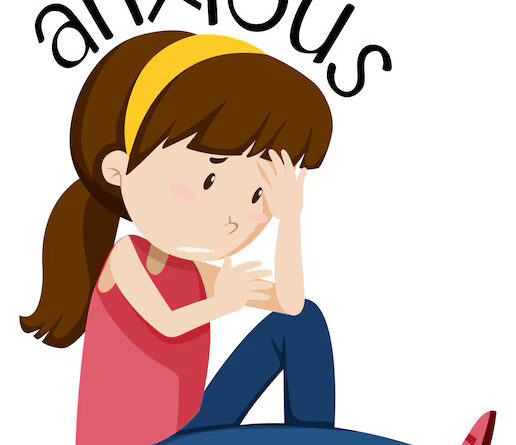Attachment anxiety: How to Fix It and Move Forward
Attachment anxiety describes a pattern of worry and unease in close relationships. It often stems from childhood experiences with caregivers who were inconsistent or unavailable. People with attachment anxiety crave intimacy but struggle to trust others fully. This can lead to behaviors like constantly seeking reassurance, jealousy, or difficulty expressing emotions. They may become clingy or preoccupied with the relationship’s health, fearing abandonment even with small signs of distance. Therapy and self-awareness can be valuable in addressing attachment anxiety, helping individuals develop healthier relationship patterns and coping strategies.
Can Attachment Anxiety be cured?
Anxious attachment, though established early on, can absolutely be improved! It’s not a permanent condition. With effort and self-awareness, you can develop a more secure attachment style. While self-help strategies exist, seeking professional help can be incredibly beneficial. TalkToAngel offers anxiety counseling services that can guide you through this process. Their therapists can equip you with tools to manage anxiety and build healthier, more fulfilling relationships.
How to Manage Attachment Anxiety?
Managing attachment anxiety often requires a combination of self-awareness, self-care practices, and professional guidance “Top psychologist in India”. Here are steps to help manage attachment anxiety with the support of a mental health professional
- Self-Awareness: Recognize your anxious thoughts and behaviors. When do they arise? What triggers them? Journaling can be a helpful tool.
- Challenge Negative Thoughts: Are your fears based on reality or past experiences? Practice reframing negative thoughts into more balanced and positive ones.
- Build Self-Esteem: Work on appreciating your own worth. Regardless of the state of your relationship, you are valued.
- Develop Secure Independence: Enjoy spending time alone. Pursue hobbies and activities that fulfill you outside of your relationship.
- Practice Open Communication: Communicate your needs clearly and honestly to your partner.
- Embrace Healthy Boundaries: Respect both your own boundaries and those of your partner. Don’t be afraid to say no.
- Focus on the Present: Don’t dwell on past hurts or catastrophize about the future. Live in the present moment.
- Practice Mindfulness: Mindfulness exercises like meditation can help manage anxiety and cultivate inner peace.
- Develop Coping Mechanisms: Find healthy ways to manage stress, like exercise, spending time in nature, or creative pursuits.
- Communicate Effectively: Learn to express your needs and emotions assertively, not passively or aggressively.
- Seek Reassurance (Mindfully): It’s okay to need reassurance sometimes, but don’t become overly dependent on it.
- Trust Your Partner (When They Earn It): If your partner is trustworthy and consistent, allow yourself to trust them.
- Focus on Your Strengths: Recognize your positive qualities and contributions to the relationship.
- Celebrate Small Victories: Acknowledge your progress, however small it may seem.
- Consider Therapy: A therapist can offer guidance and support in developing secure attachment patterns.
- Be Patient with Yourself: Change takes time. Be kind to yourself as you work towards a more secure attachment style.
Remember, Managing attachment anxiety is a journey, not a fix, but with consistent effort and self-kindness, you can build stronger, more fulfilling relationships. Consider talking to an “Online counselor” for support.
What Are the Symptoms of Attachment Anxiety?
Attachment anxiety refers to a psychological condition characterized by a heightened concern with interpersonal relationships and a fear of abandonment or rejection. Individuals with attachment anxiety often experience a range of emotional and behavioral symptoms that can impact their relationships and overall well-being.
- Overanalyzing Relationships: Obsessively analyzing interactions and behaviors of others to look for signs of rejection or disinterest.
- Excessive Need for Reassurance: Frequently seeking reassurance from others about their feelings and the stability of the relationship.
- Intense Emotional Responses: Reacting strongly to perceived signs of distance or withdrawal from loved ones, often experiencing feelings of panic, anger, or sadness.
- Difficulty Trusting Others: Struggling to trust others’ intentions and feeling suspicious or doubtful of their loyalty.
- Dependence on Relationships: Reliance on relationships for emotional stability and self-worth, feeling incomplete or inadequate without constant validation from others.
- Jealousy and Possessiveness: Feeling threatened by others in their partner’s life and becoming overly possessive or jealous.
- Need for Closeness: Craving constant closeness and intimacy with partners or loved ones to alleviate fears of abandonment.
- People-Pleasing Behavior: Going out of their way to please others and avoid conflict to maintain relationships, even at the expense of their own needs.
- Difficulty Setting Boundaries: Struggling to establish and maintain personal boundaries in relationships, often sacrificing personal needs to please others.
- Hypersensitivity to Rejection: Being highly sensitive to perceived rejection or criticism, taking minor incidents as proof of unworthiness.
- Insecurity and Self-Doubt: Persistent feelings of inadequacy, low self-esteem, and self-doubt in relationships.
- Tendency to Cling: Clinging onto relationships or individuals, fearing being alone and feeling anxious when apart from loved ones.
- Mood Swings: Fluctuating between extremes of emotion, from intense affection to anger or despair based on perceived relational cues.
- Difficulty Managing Emotions Independently: Relying heavily on others to regulate emotions, feeling overwhelmed or lost when emotional support is lacking.
- Chronic Stress and Anxiety: Living with a persistent sense of worry, anxiety, or stress related to relationships and fear of abandonment.
Consider seeking professional help from a therapist who can provide tools to manage anxiety and build healthier, more trusting relationships.

